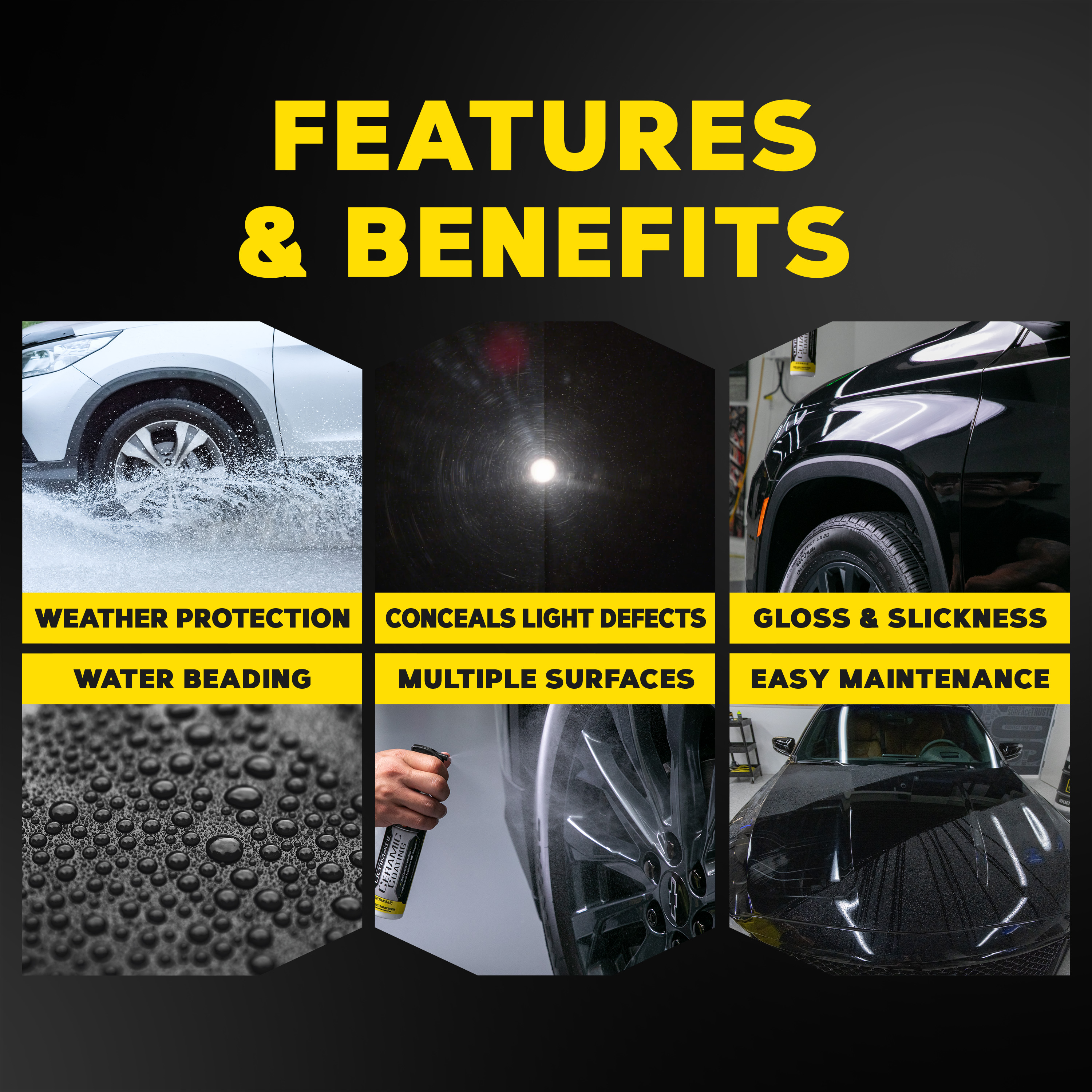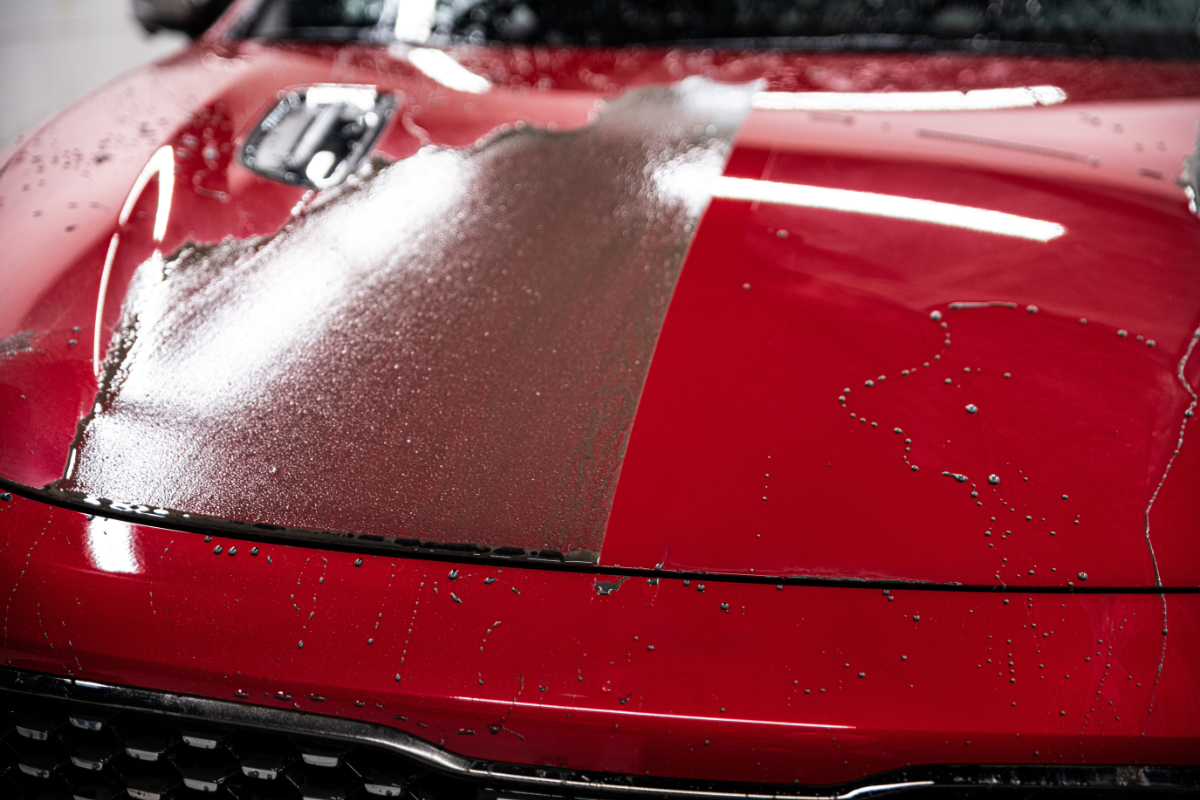How Ceramic Coating Philadelphia Saves Time and Money on Upkeep
How Ceramic Coating Philadelphia Saves Time and Money on Upkeep
Blog Article
Why Ceramic Coating Is the Ultimate Remedy for a Perfect End Up
Ceramic finish has become a leading solution for those seeking a remarkable surface for their vehicles, many thanks to its amazing resilience and protective features. This sophisticated fluid polymer not just bonds seamlessly with factory paint but also offers a powerful obstacle against typical hazards such as scratches, UV rays, and ecological toxins. Additionally, its hydrophobic residential or commercial properties streamline upkeep while boosting aesthetic appeal. Comprehending how this technology contrasts to traditional approaches and discovering its application subtleties can disclose even extra regarding its worth. What variables really set ceramic coating apart?
What Is Ceramic Coating?

When used properly, ceramic layer produces a hydrophobic surface area that repels water and dirt, making it much easier to preserve and cleanse. Unlike typical waxes or sealers, which usually offer short-lived protection, ceramic finishings can last for several years, relying on the product quality and application technique. The process of applying ceramic finishing needs thorough prep work, including detailed cleansing and sometimes repaint adjustment, to make certain optimal bonding and efficiency.
Ceramic layers are not limited to auto surface areas; they can also be utilized on different products, including glass, steel, and plastics, offering a versatile remedy for boosting defense. Overall, ceramic coating represents a considerable advancement in surface protection modern technology, combining both aesthetic and practical benefits for a large range of applications.
Advantages of Ceramic Finishing
While several surface area security choices exist, the advantages of ceramic covering stick out because of its unique homes and long-lasting efficiency. Among the primary advantages is its outstanding longevity. Ceramic Coating Philadelphia. Unlike standard wax or sealants that need regular reapplication, ceramic coverings supply a durable layer that can last for numerous years, significantly decreasing upkeep efforts
An additional noteworthy benefit is improved defense versus ecological pollutants. Ceramic finishes create a hydrophobic surface area that pushes back water, dust, and different contaminants, making it easier to cleanse. This function not just maintains the car's look but likewise minimizes the risk of deterioration and oxidation, specifically in harsh weather problems.
Moreover, ceramic finishes supply exceptional resistance to UV rays, preventing fading and deterioration of paint gradually. This UV defense is critical for preserving the visual worth of surface areas and lorries exposed to guide sunlight.
Furthermore, the shiny coating accomplished with ceramic finish improves the overall aesthetic appeal, offering surfaces a showroom-quality shine. On the whole, ceramic finishes stand for a considerable development in surface security innovation, offering long-lasting advantages that provide to both useful and visual requirements.
Just How It Works
Recognizing the scientific research behind ceramic finishes reveals exactly how they supply such remarkable security and longevity. At its core, a ceramic coating is a fluid polymer that chemically bonds with the lorry's manufacturing facility paint.
The application process involves several actions, consisting of surface prep work, which is essential to attaining optimum attachment. As soon as applied, the finish undertakes a healing process, during which it sets and forms a semi-permanent bond with the paint surface. This bond is what identifies ceramic finishings from typical waxes and sealants, providing a longer-lasting protective barrier that can endure for many years.
Furthermore, the density of the covering can enhance its protective high qualities, guaranteeing that it can hold up against severe conditions. Inevitably, the scientific research of ceramic layers combines sophisticated materials with ingenious application techniques to provide an unrivaled level of protection and aesthetic improvement for cars.
Contrast With Traditional Techniques
The advantages of ceramic layers end up being especially noticeable when contrasted to typical paint defense methods such as waxes and sealers. While waxes offer a momentary sparkle, commonly lasting a couple of weeks to a number of months, ceramic finishes supply a durable safety layer that can withstand for numerous years. This toughness significantly minimizes the regularity of reapplication, making ceramic finishings a much more economical option gradually.
Additionally, traditional techniques typically require substantial preparation and multiple applications to attain an acceptable level of defense. In comparison, ceramic coverings bond at a molecular degree with the car's surface area, producing a durable shield against ecological pollutants like UV rays, acid rainfall, and road salts. This bond boosts the lorry's resistance to scratches and swirl marks, which are widespread with standard waxes and sealers.
In addition, the hydrophobic homes of ceramic finishes drive away water and dirt, resulting in less complicated cleaning and upkeep. On the other hand, wax and sealant-treated surfaces can draw in grime, demanding even more regular cleaning - Ceramic Coating Philadelphia. Overall, ceramic finishes not just offer remarkable defense however likewise provide a much more long-lasting and aesthetically enticing coating, developing them as the recommended option for discerning automobile owners
Application and Maintenance Tips

Making use of a foam applicator, apply the coating in little sections, following the manufacturer's guidelines concerning density and overlap. Permit adequate healing time between coats, commonly 24-hour, to make certain proper bonding. After application, it is important to prevent exposure to water or rough elements for at the very least a week to permit the layer to completely cure.
Furthermore, using a ceramic maintenance spray can boost the layer's hydrophobic properties and longevity. Routine inspections for any kind of indications of wear will certainly help maintain the finish's honesty and preserve that pristine coating.
Final Thought
In final thought, ceramic covering arises as a superior choice for achieving a flawless automobile finish. By creating a durable bond with manufacturing facility paint, ceramic layer successfully shields versus scrapes, UV rays, and ecological pollutants.

Report this page